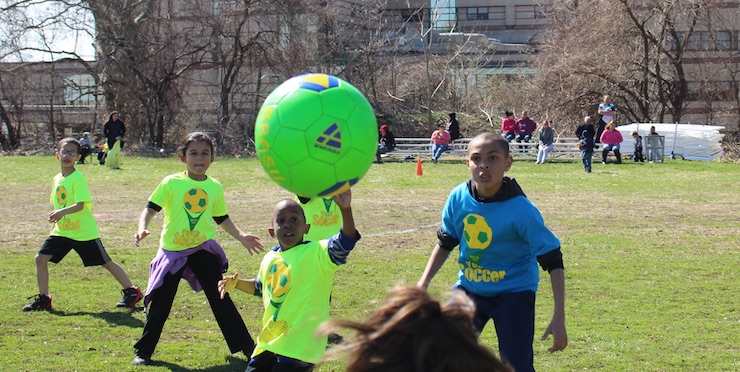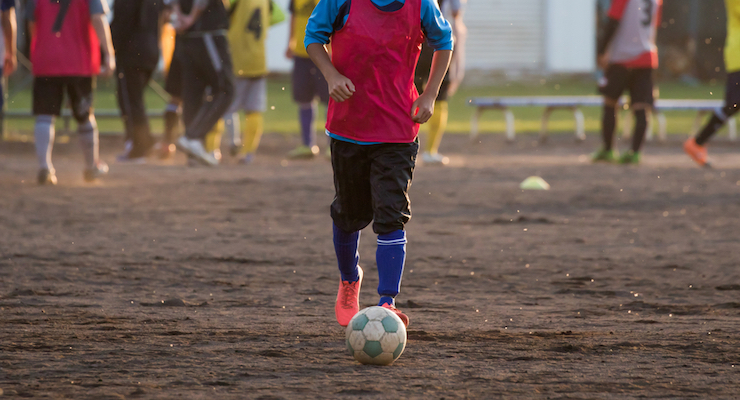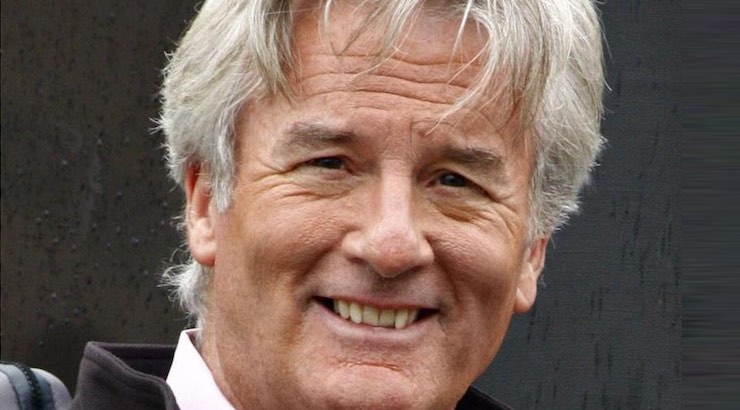Poverty and the Outlet Soccer Can Be For Low Income Neighborhoods
A Soccer Development article written by Michael Barr.
Michael Barr, Technical Director, Eastern Pennsylvania Youth Soccer is one of the most successful soccer coaches in the country. Barr holds an USSF “A” coaching license, the NSCAA International Premier License, the National Youth License, and Scottish Football Association’s “B” license. Barr shares his provocative insights on the opportunities for women coaches in the world of American soccer.
Related Articles by Michael Barr: Different Pathways for Player Development; No Excuses – It’s Time for More Women Coaches
Imagine children between the ages of 6 and 18 being raised in parts of Philadelphia, Chester, Norristown, Pottstown or Reading? Or any inner city areas across the country. Poverty, crime and a sense of hopelessness await them at every corner of dilapidated homes and forgotten dreams.
I attempt to envision the day these children were brought into this world and a smiling mom looking down on her baby; hoping and wishing for success as her glorious, little child grows older.
Most likely the same thoughts resonated within the moms in Society Hill, the Main Line, or parts of Bucks County and Chester County as they gazed down at the miracle cushioned in their arms. This would be the same experience and dream for moms all across our country.

Wanting to provide what is best for your child is inherent in every parent but unforeseen circumstances may diminish the opportunities for each child.
Unfortunately, economics play a role so enormous today that love and strong parenting is often challenged in bringing a child success and happiness as an adult.
Roadblocks are everywhere for children living in poverty. The school environment is rarely conducive to learning or excelling. Advanced placement classes, music, theatre, and other areas of the arts are short-changed at every level. Advocates for children within schools in these neighborhoods are few due to limited funding or a level of frustration that permeates over a period of time. Facilities and resources seem to never measure up when comparing these schools to wealthier districts or private schools. Rather than closing the gap between schools it only grows wider each year.
Incredibly, in years past, many students searched and found an avenue that could lead them out of poverty, frustration and lack of opportunity. Being exposed to sports and having the chance to play sports within schools or various youth clubs, presented a way out and a purpose to their lives.
Sports provided proper outlets to an adolescent’s life and a chance to be recognized and to be part of something positive.
Regrettably, the professionalism of youth sports has created a huge crack that may be impossible to repair between the haves and have nots in this country. Forget about the 2 percenters so often talked about in this contentious election year.

Try to focus on the 40 percent and growing, number of youngsters being deprived of opportunities to play or excel because of the high costs of playing most sports and the lack of availability to play certain sports with school districts.
In my position as technical director of Eastern Pennsylvania Youth Soccer I see the disparity on a daily basis at numerous soccer clubs within our state.
Where some clubs have professional paid coaches working with all children from U6 to U18; other clubs get by with a few volunteers who attempt to provide the best they can offer and take on numerous roles to provide impoverished children a chance to play. The division was really apparent to me when I visited a new program trying to get off the ground in North Philadelphia called MVP360, ironically located at 101 East Erie Avenue. These are the same fields where the Lighthouse Soccer Club originally began. Possibly the most famous soccer club in Philadelphia storied soccer history.

Felix Agosto, a retired military officer, is the founder of MVP360 and his focus is not just soccer but other sports too. He sees the need for children in disadvantaged areas to have the opportunities to participate in sports. Agosto operates on meager funds from donations or his own money, as he travels from New Jersey to provide sports to the children in this neighborhood.
Watching him and his three volunteer assistants work with 30 children on a Saturday morning brought a myriad of thoughts to me.
The one thought that just would not escape me was how did we get to this point where all the opportunities in education, the arts and even sports now falls exclusively to upper and upper-middle income families?
Have we entered a shift where a new profound segregation of families and their children is occurring due to income? More importantly what will be the repercussions if this trend continues?

Consider that well to do families who search out professional coaches in almost every sport in hopes that their son or daughter may meet college or even professional success.
Their children may attend high schools that offer from 25 to 30 sports teams for boys and girls and yet within disadvantaged school districts, some schools may be lucky to have between 12 to 15 sports teams for their students. If looking at extra-curricular activities the gap grows even larger.
Sports, the great equalizer in providing chances to disadvantaged youth, has become an avenue that ignores the poor and creates impossible odds for children to overcome.
The lack of opportunities stacked against impoverished children comes now in the form of both academics as well as athletics. Unfortunately, these continued practices could pose huge ramifications in the future. With little or no outlets within sports, an education that is not meeting the needs of millions of students, and little hope for the future, frustrations within teenagers and young adults could affect society in unimaginable ways.

Youth soccer clubs and even US Soccer should be examining their best practices for initiating and condoning the high costs of playing, extensive travel for families and forcing children to play only one sport. The common occurrences of exclusivity and making decisions on who has the talent to play the game at age eight or nine are affecting children nationwide.
The decrees made by a few are destroying the dreams and playing opportunities of thousands of kids.
Coaches who know nothing of player development but embrace wins and money are appearing more frequently in many clubs; even to the point where many, with limited soccer backgrounds from other countries, are applying for visas to capitalize on this phenomenon.
Changes have to be made. We should be examining the causes and find solutions on a national scale. The future for many children can be altered in a positive way and create a level playing field if state and local governments, professional sports, major corporations, non-profits and private individuals come together to find alternatives to eliminate the huge differences in opportunities.

Imagine if professional sports would give back only a portion of the billions of dollars of profit each year to low income recreation programs or inner city schools. What if professional youth coaches took the time to provide one day of training per week to disadvantaged youth or train kids from poor recreation clubs? What if every middle and high school made all team sports available or provided a child without a team at his or her school, a chance to participate at a local high school who may offer the sport they want to play?
We should try to live by the words Eleanor Roosevelt when addressing an audience during the Great Depression, “It gets better for everybody, when it gets better for everybody.”
Michael Barr’s article was originally published on The Delaware County Daily Times and edited then for SoccerToday.

Michael Barr is a motivated, teacher and soccer coach with nationally recognized expertise and a thirty year history in working with top level soccer players, instructing youth coaches and speaking to numerous groups about player development.
Technical Director of Eastern Pennsylvania Youth Soccer, Barr is also a National Staff Coach for the United States Soccer Federation, Barr is a National Youth License Instructor, and holds the USSF “A” coaching license, the NSCAA International Premier License, the national youth license, and Scottish Football Association’s “B” license.






